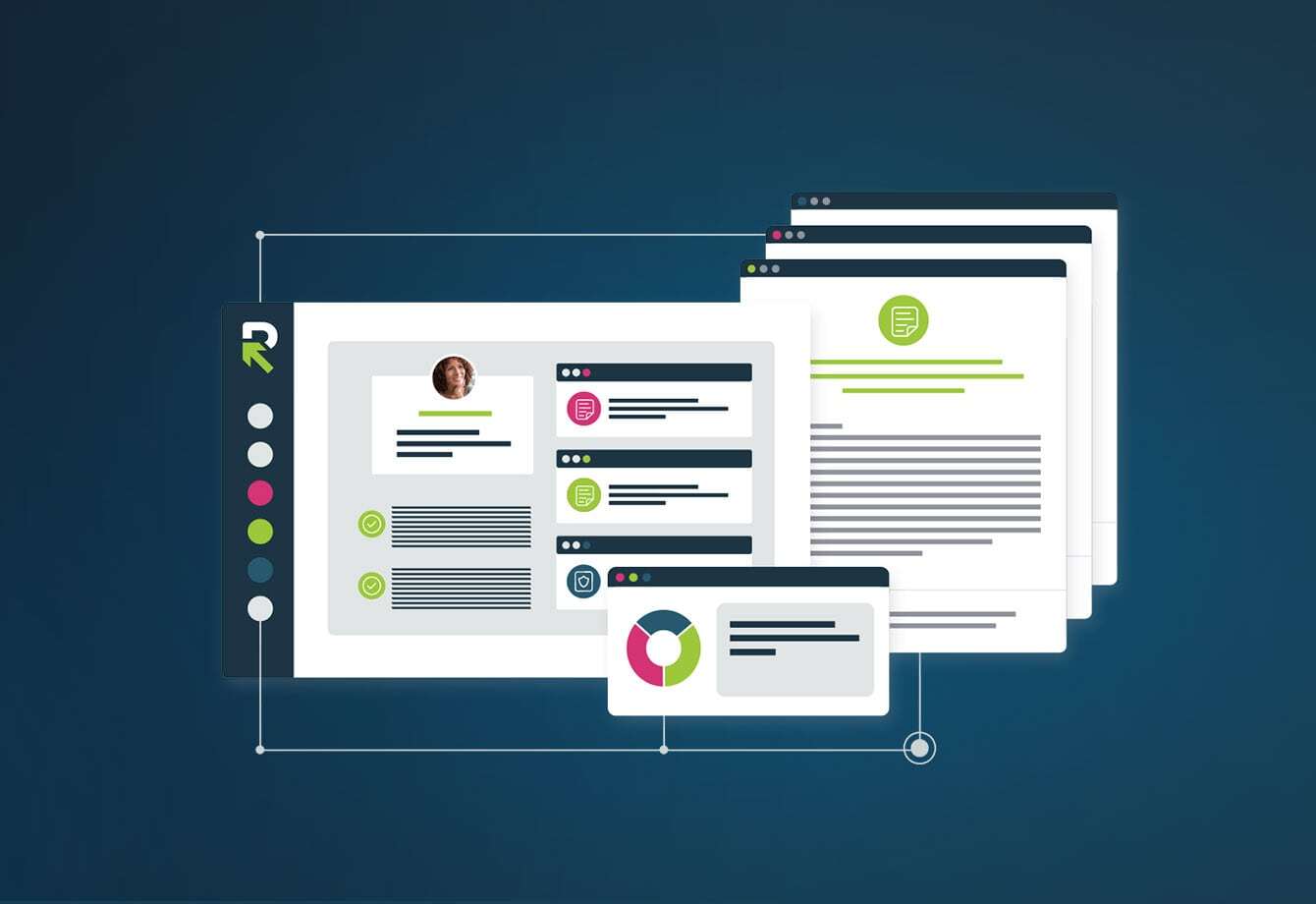Does your business have an effective RFP strategy? When it comes to RFPs, organizations generally take one of two approaches. Either they respond to every RFP they receive, or they ignore them completely and opt out of the process. Unfortunately, neither option could be called strategic. One wastes time and the other ignores potential opportunities.
In the middle of these two opposite approaches is an RFP strategy that will improve your chances of winning while ensuring your time is used wisely. With some consideration, time and helpful tips you can discover how to use RFPs as a tool to grow your business.
In this blog, I’ll define what an RFP strategy is. Then, I’ll explore the flaws in common approaches to RFPs and why they work well. Finally, I’ll offer some tips to help you make your RFP strategy a success. With these things in mind, you can build a process that saves time, optimizes your proposals and empowers you to win more business.
What is an RFP strategy?
So, what exactly is an RFP strategy? An RFP strategy is how your business receives, reviews and approaches requests for proposals. In addition, it clearly defines goals and expected outcomes. Finally, an RFP strategy serves as a guide for decisions to bid or not to bid.
Factors to consider when creating your RFP strategy:
- How many RFPs do you respond to in a year?
- What is your RFP win rate?
- On average, how much time does an RFP response require?
- Typically, how much value does an RFP opportunity represent?
- What percentage of revenue is a result of successful proposals?
These questions will help you define the role that RFPs play in your business. With that information in mind, you can start to build your RFP strategy by considering the results that could be achieved with small changes to your current approach.
RFP strategies are often part of larger business development initiatives. For instance, Viewpoint, a computer software, created an RFP strategy for business development. According to Mark Vignolo, Viewpoint’s Manager of Sales:
“I’m not entirely sure that we are unique, but I can tell you that we definitely see our share of RFPs. One of the things I’ve mentioned during the sales process is, when somebody gets a 1000-question RFP, nobody’s happy to receive that.
But when an RFP comes in, you can’t say no. Really, it’s the gateway to getting involved in the sales process.”
With the goal of growth in mind, they adopted RFP software to streamline their process and enable their existing staff to leverage their proposal content library and collaborate more effectively. Their typical response time went down by 20-30 percent.
RFP strategy example
To illustrate, if Viewpoint were to define its RFP strategy, it might look like this:
Our company uses RFPs to win new business. The goal of our strategy is to increase both the number of RFPs we respond to as well as our win rates. We will do this by increasing our team efficiency as well as improving the quality of our RFP content.
We receive RFPs directly from customers as well as through RFP databases and open bids. We increase efficiency by 20-30 percent by leveraging RFP software to automate RFP responses, ensure consistency and collaborate with subject matter experts (SMEs) and stakeholders.
If successful, business secured from RFPs will represent 30 percent of new revenue, a 15 percent increase over last year.
Why common approaches to RFPs don’t work
It’s no secret that RFPs are not well-loved. As mentioned above, businesses frequently adopt an extreme all-or-nothing policy when it comes to responding to RFPs. If either of these approaches sound familiar, it may be time for a better RFP strategy.
The shotgun approach: Answering them all
If you answer every RFP, you may find yourself thinking, “Why do I need an RFP strategy? It’s simple, an RFP comes in and we answer it. Then, we wait to find out if we won.” This reactive approach is unpredictable, chaotic and inconsistently rewarding. In fact, not being selective often results in a low RFP win rate, a burned-out proposal team and a whole lot of wasted time.
The problem is that businesses that answer every RFP often don’t calculate the cost of the time spent creating a proposal. Subsequently, they neglect to weigh their investment with the likelihood of winning.
Not only does answering every RFP mean that you’re wasting time, it likely also means that your RFP responses aren’t customized to the buyer’s needs. The results? At best, you don’t win the RFP. At worst, you make a bad impression and the potential customer remembers you for all the wrong reasons.
The take-my-ball-and-go-home approach: Opting out of the RFP process
On the opposite end of the spectrum is the second common approach to RFPs — not participating at all. Unfortunately, it’s a common situation: the deck was stacked against you. You’ve spent time researching, collaborating and crafting an RFP response, honing it until it was pure perfection, only to discover that there was no real chance of winning. Lo and behold, your work-of-art proposal was merely rounding out the required trio of proposals in a farce of due diligence.
Some businesses that have run into this situation one too many times, simply refuse to answer RFPs altogether. While it’s an understandable reaction, refusing to engage altogether means the business misses out on genuine opportunities for which they might have been the perfect fit. These organizations limit their potential for growth, miss out on insights that could be gained from RFP data and force customers to work outside of the proven RFP process — it’s an approach that few can afford long term.
If neither of these options sounds ideal, you’re right. There’s a better way, and it starts with defining an RFP strategy.
5 tips to make the most of your RFP strategy
1. Adopt a proactive RFP approach
When it comes to receiving RFPs, many businesses just wait for them to arrive in their inbox. However, if you’re looking to grow your business, being proactive pays. After all, you can’t respond to an RFP if you don’t know it exists.
Encourage client-facing team members to ask questions about potential customers’ procurement process. Do they plan to issue an RFP? If the answer is yes, offer to be a resource for them as they create their RFP. For example, Cegid, a business management solution, created The ultimate guide for building an RFP for talent acquisition in 3 steps.
Because they offer this guide, they deliver genuine value for their customers. In addition, they position themselves as a leader in the industry and stand a good chance of receiving the subsequent RFP, packed with questions they wrote themselves.
2. Pair your RFP strategy with capture management
Capture management is the process of gathering insight, building a connection with a potential customer and strategizing how to win RFPs that are upcoming. The goal of capture planning is to put you in a favorable position long before the RFP is issued.
Using a capture management plan as a part of your RFP approach for particularly valuable opportunities increases your chances of success. If you’re interested in learning more about how to create a capture management plan, check out this blog: Capture management: The plan to win.
3. Be picky about which RFPs you respond to
As you create your strategy, improving your RFP win rate will likely come up. One of the fastest ways to give it a boost is to simply decline to bid on opportunities that aren’t a good fit or you’re unlikely to win.
The decision to bid or not to bid should be based on five factors:
- The big picture: Does this opportunity align with your business’s long-term goals?
- Capability: Is your business equipped to fulfill the RFP requirements?
- Profitability: Will the project be profitable?
- History: Do we have proposal content from a previous RFP in our knowledge library?
- Competition: Do you know who you’re competing against and can you win?
Remember, if you decide not to bid, it’s a good idea to clearly communicate your intention with the RFP issuer. In some cases, the issuer will respond, asking you specifically to provide a proposal and offering additional insight that might sway your decision. Not only that but the extra courtesy and communication will make you memorable and ensure you’re not excluded from future opportunities.
4. Adopt RFP software to improve the RFP process and collect data
When it comes to execution of your RFP strategy, you may find yourself in need of a little help. RFP software centralizes the proposal process and streamlines it with RFP automation. When responding to RFPs, an RFP management system allows you to quickly access past proposal content, confer with SMEs and track proposal progress. Additionally, it enables greater collaboration, improved efficiency and data collection. It’s truly a game-changer.
Speaking of data, if you’re not already tracking your RFP data including your win rate, start now. The benefits of capturing RFP data are numerous. Tracking your win rate is the best way to understand how you’re winning, why you’re winning and how to win RFPs more often. Additionally, with RFP data you can optimize your proposal process, predict RFP trends and quantify the value you deliver to your business.
5. Share your strategy with the business
RFPs inevitably require participation from people across your organization. So, it is helpful to define your team and bring them into your plan. A well-documented approach helps to guide all departments that interact with the proposal process from sales to legal. Certainly the better they understand the process, the more likely they are to participate effectively.
Finally, share your success stories. It’s not uncommon for SMEs and stakeholders to circle back with the proposal coordinator to ask, “Whatever happened with that big RFP we worked on?” While you may not need a full debrief for every opportunity, it’s important to close the loop. Celebrate wins and share lessons learned from lost opportunities. Always use the knowledge to continue optimizing and improving your RFP strategy.
Final thoughts
A well-defined RFP strategy can streamline your proposal process, help you win RFPs and make your team more efficient. Subsequently enabling you to respond to even more RFPs and win more business. As time goes on, the benefits compound and your RFP strategy will continue to pay dividends.



